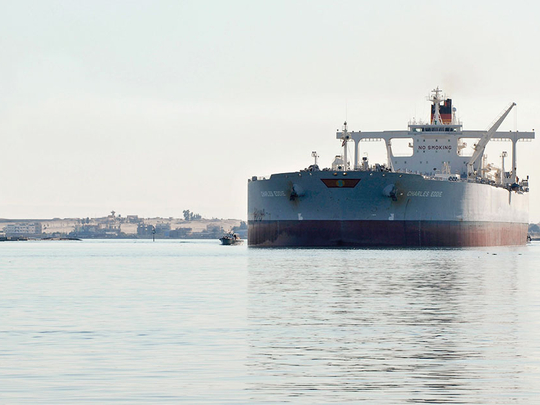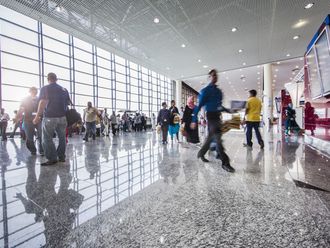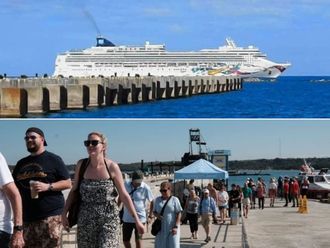
London: The 200,000-ton cargo ship currently lodged in the Suez Canal, bringing 13 per cent of the world's trade to a halt, may be the biggest vessel to get stuck in a major waterway.
But if history is any guide, it won't be the last.
Movement of ships between the Red Sea and Mediterranean has been halted since early Tuesday when the container ship 'Ever Given' ran aground in the southern part of the Egyptian canal. Efforts to dislodge a vessel that's longer than the Eiffel Tower have been unsuccessful, raising prospects that it may take days - or longer - to resolve.
The blockage highlights a major risk faced by the shipping industry as more and more ships transit maritime choke points including the Suez, Panama Canal, the Strait of Hormuz and Southeast Asia's Malacca Strait. Such occurrences could become more common as ships get bigger and waterways get more congested.
Massive gets bigger
Container vessels have nearly doubled in size in the past decade as global trade expanded, making the job of moving such ships much harder when they get stuck. This is particularly the case now as homebound consumers around the world order goods online due to the pandemic, prompting such vessels to carry more and more containers and increased shipping congestion.
"I have never seen a container vessel this large grounded so hard in a canal that way," said Lindsay Malen-Habib, president of the American Salvage Association. "This is a first that I can remember." Still, this latest Suez incident is nothing compared to the eight-year shutdown in 1967.
Brought to a halt
After the Six-Day War between Israel and its Arab neighbors that year, the Suez Canal was shut down until 1975 while Egyptian and Israeli forces faced off across the waterway. During that period, shippers had to go around Africa, adding time and expense to world trade.
The closure also ensnared 15 cargo ships - dubbed the Yellow Fleet - partway through their canal transit, turning a day-long journey into an eight-year ordeal.
The latest closure of this key waterway has halted the transit of about 185 ships, according to Richard Meade, London-based managing editor of Lloyd's List Maritime Intelligence. Yet, as in 1967 and throughout history, there are alternatives.
"The canal hasn't always been there," he said. "Its entirely feasible for shipping to reroute around Africa."
Brief stoppages too
In 2016, two separate incidents occurred where ships ended up blocking the canal. In one case, the shutdown lasted two days. That incident was brief and the stuck ship was half the size of the Ever Given, according to Meade.
The Ever Given is among the largest of container ships in the world and was as "full as it can be" when it became stuck, Meade said. "At the moment, all ships are fully laden because there is so much demand."
If the shutdown also lasts a day or two, it will have little impact on global shipping, Meade said. If the drags on much longer and containers need to be unloaded to lighten the vessel, the delay could be weeks and shippers will have to start making difficult calculations of whether it might be better to turn south and sail around Africa's Cape of Good Hope.
Other waterways have also experienced disruptions. The Panama Canal closed for a day in 1989, when US military forces staged an assault on the Central American country to depose the country's leader Manuel Noriega. Just two years ago, a chemical plant fire in Texas prompted the shutdown of the three-day closure of the Houston Ship Channel in 2019.








